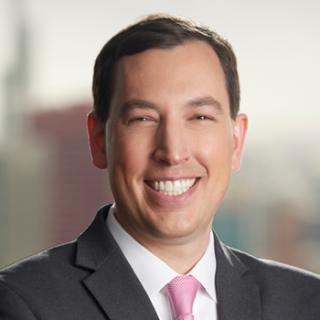News
Article
'Frustrated, burned out, abandoning hope' – physicians need support now in Washington, D.C., and around the nation
Author(s):
Solutions for doctor shortage won’t be easy or fast, but they could be effective, AMA president says.
© freshidea - stock.adobe.com

The nation’s shortage of physicians is critical – but not hopeless, said the leader of the American Medical Association (AMA).
A five-point plan to bolster the physician workforce will not be easy or fast, but it could be effective for doctors and patients, said AMA President Jesse M. Ehrenfeld, MD, MPH. He outlined key parts of the association’s Recovery Plan for America’s Physicians in an Oct. 25 presentation, “What America’s looming physician shortage means for patients and health care, and how to fix it – now,” at the National Press Club in Washington, D.C.
Physician burnout has grown to become an “insidious” and “urgent” crisis across America. Many doctors already know that, but Ehrenfeld said the situation is not getting the attention it deserves from other people. Things will get worse before they get better as physicians leave in droves.
“Physicians everywhere – across every state and specialty – continue to carry tremendous burdens that have us frustrated, burned out, abandoning hope … and in increasingly worrying numbers, turning our backs on the profession we’ve dedicated our lives to,” Ehrenfeld said.
Jesse Ehrenfeld, MD, MPH
American Medical Association

What would help
Speaking in Washington, Ehrenfeld described proposed solutions that could be approved in Congress, where many already have bipartisan support.
“There isn’t much that our two major political parties see eye to eye on right now, but on these issues they do,” he said. “We just need the will – and the urgency – perhaps a speaker – to get it done. We need leaders in Congress to step forward and make this happen.”
Step one: Give doctors financial support. House Resolution (HR) 2474 is the “Strengthening Medicare for Patients and Providers Act.” It would provide physicians with Medicare payment updates adjusted for inflation as reflected in the Medicare Economic Index.
“This would simply put physicians on equal footing as inpatient and outpatient hospitals, skilled nursing facilities and others who receive payment through Medicare,” Ehrenfeld said. Accounting for inflation, Medicare reimbursement to physicians is down 26% from 2001, he said.
Step two: Reduce administrative burdens, including “the overused, inefficient prior authorization process that insurers use to try to control costs.”
Congress, the president’s administration, and the U.S. Centers for Medicare and Medicaid Services (CMS) all have parts to play in this, Ehrenfeld said. He called for the House and Senate to approve the “Improving Seniors’ Timely Access to Care Act,” which would expand prior authorization reforms finalized by CMS.
Step three: Pass three bipartisan bills “to expand residency training options, provide greater student loan support, and create smoother pathways for foreign-trained physicians,” Ehrenfeld said.
Specifically, the “Conrad 30” and the “Physician Access Reauthorization Act” would improve the J-1 visa waiver programs to address physician shortages in an emergency, especially in rural and underserved areas, while promoting a more diversified workforce. The Conrad 30 bill adds worker protections against physician mistreatment, Ehrenfeld said.
The “Healthcare Workforce Resilience Act” would recapture 15,000 unused employment-based physician immigrant visas, while the “Retirement Parity for Student Loans Act” would allow retirement plans to make voluntary matching contributions to physicians during residency, he said.
Step four: “Stop criminalizing health care that is widely recognized as safe, and that is backed by science and many years of evidence,” Ehrenfeld said. He called out the 2002 U.S. Supreme Court decision overturning Roe v. Wade for “radically” changing American health care.
Now, 14 states have outright bans on abortion and seven have partial bans. Meanwhile, 22 states have laws restricting or banning gender-affirming care for minors, Ehrenfeld said. These actions force government into personal health care decisions and cause confusion for patients, he said.
Step five: Make sure physicians are not punished for taking care of their mental health needs.
Feelings of burnout do not necessarily lead to thoughts of suicide. But physicians die by suicide at twice the rate of the general population, Ehrenfeld said.
In either case, physicians hesitate to seek mental health help for fear of jeopardizing their licenses or employment. Seeking mental health help is a sign of strength, not a weakness, and states and employers should remove outdated and stigmatizing language from their various application forms, Ehrenfeld said.
How it stands
Ehrenfeld peppered his speech with personal anecdotes about physicians in despair and patients lacking care.
“It’s estimated that more than 83 million people in the U.S. currently live in areas without sufficient access to a primary care physician,” he said. “In large parts of Idaho and Mississippi, pregnant women can’t find OBGYNs to care for them.”
- 90% of U.S. counties don’t have a pediatric ophthalmologist.
- 80% don’t have an infectious disease specialist.
- More than one-third of Black Americans live in cardiology deserts.
Ehrenfeld added that in Florida, his own parents lost their primary care physician because Medicare reimbursement rates are plummeting, pushing independent physicians to financial ruin.
Root causes
Among its many effects, COVID-19 exposed problems in the U.S. health care system. But this situation is not just a pandemic hangover.
Ehrenfeld highlighted a number of reasons why physicians hang up their white coats. Not least are administrative burdens, continuing attacks on science, governmental intrusion in health care, consolidation in health care systems and insurers, and epidemic gun violence and drug overdose deaths.
- Physician burnout is rampant. About two out of three doctors admitted to burnout in the COVID-19 pandemic, the highest measure ever, according to a survey by AMA, the Mayo Clinic and Stanford Medicine.
- One in five physicians surveyed during the pandemic said they planned to leave medicine in the next two years; one in three said they would cut back their hours.
- International medical graduates (IMGs) face difficulties emigrating to the United States and practicing here.
- New doctors graduate medical school facing $250,000 in debt, which spurs them to pursue lucrative specialties in cities instead of primary care or practicing in rural areas.
“The physician shortage that we have long feared – and warned was on the horizon – is already here,” Ehrenfeld said in his prepared remarks. “It’s an urgent crisis … hitting every corner of this country – urban and rural – with the most direct impacting hitting families with high needs and limited means.
“Imagine walking into an emergency room in your moment of crisis – in desperate need of a physician’s care – and finding no one there to take care of you,” he said. “That’s what we’re up against.”





